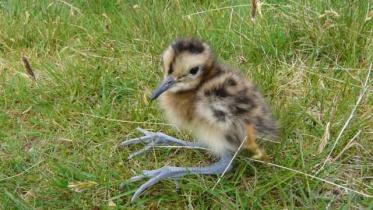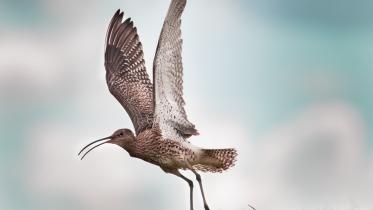NE Scotland reaches 1.5m wildlife records
15 March 2019
A speckled wood butterfly has become the 1.5 millionth wildlife record logged in North East Scotland.
A speckled wood butterfly has become the 1.5 millionth wildlife record logged in North East Scotland.
Spotted by a local butterfly recorder near Banchory, the speckled wood butterfly has increased by more than 30 percent in its distribution and geographical spread across the UK in the last 40 years, and can now be widely seen across Aberdeenshire.
Glenn Roberts, North East Scotland Biological Records Centre (NESBReC) Coordinator, said: “This is a phenomenal achievement for our many ‘citizen scientists’ in North East Scotland. We’re so fortunate to have such a wide variety of wildlife in the area, and we’re grateful to everyone who contributed.
“People are often surprised to hear about the many kinds of animals that can be found in the area, from owls to whales to rare fungi. With spring soon to begin there are invertebrates, such as some butterflies and bumblebees, coming out of hibernation, emerging from dusty sheds, garages and holes in the ground. Hedgehogs will also be coming out of hibernation – look out for them in your gardens, in woodland and on our country roads – even a record of roadkill is useful.”
Denise Reed, Scottish Nature Heritage’s (NatureScot’s) Tayside & Grampian unit manager, added: “I’d encourage everyone to submit their animal sightings. Every record is important: this information is invaluable to help us learn about and protect animals in the North East.”
NESBReC welcomes sightings of any wildlife in the North East. While rare species may be more exciting to find, it is very important to record common species too. All records help to build a better understanding of the natural world and can help ensure that decisions, which may affect habitat and species in the North East of Scotland, are made with the best available knowledge.
Wildlife records are maintained by NESBReC, part of Aberdeenshire Council. NESBReC is also supported financially by NatureScot, Aberdeen City Council, Cairngorms National Park Authority, Forestry Commission Scotland and RSPB Scotland.
Wildlife sightings can be sent to [email protected]. A simple sighting record should contain four key pieces of information: what was seen, where it was seen, who saw it, and when it was seen. For more information on how to send in a sighting, see www.nesbrec.org.uk.





